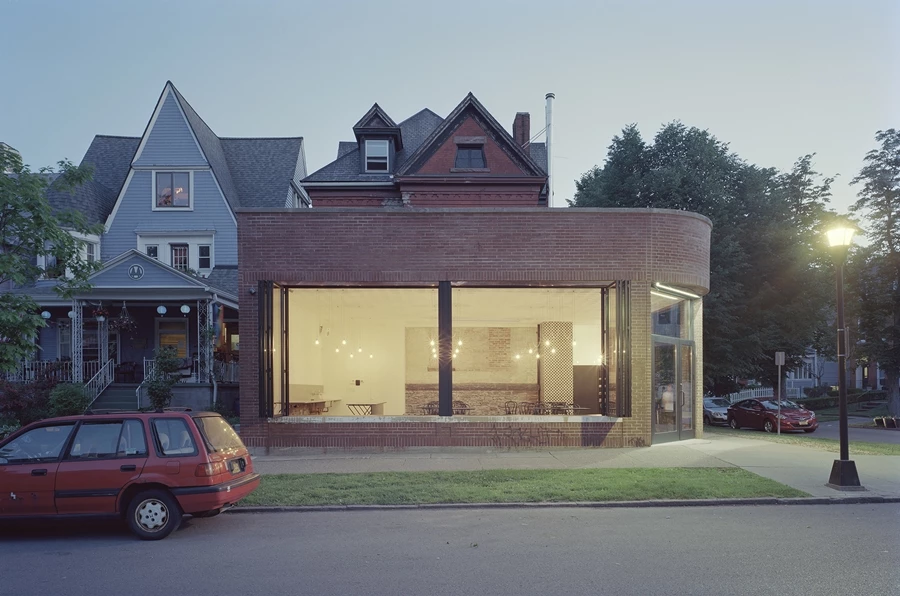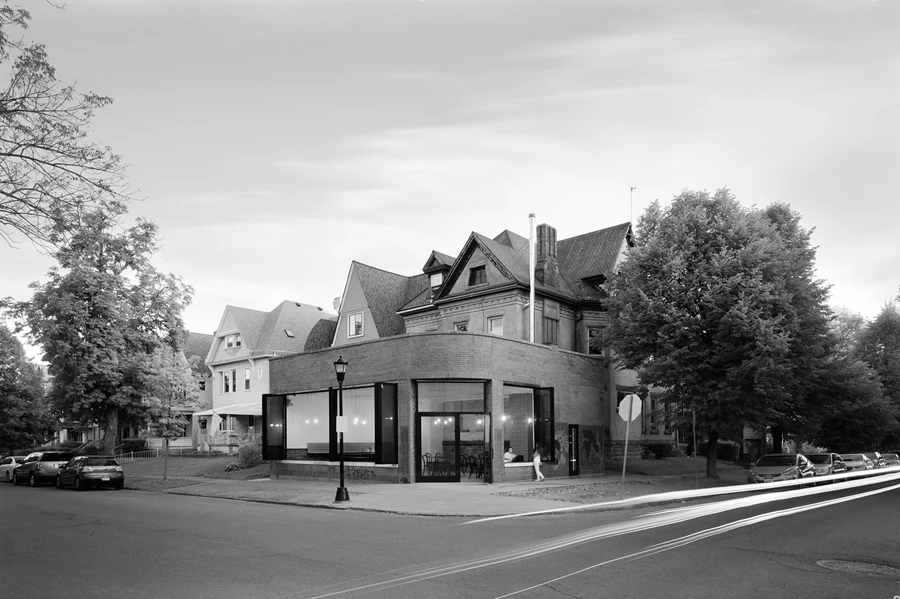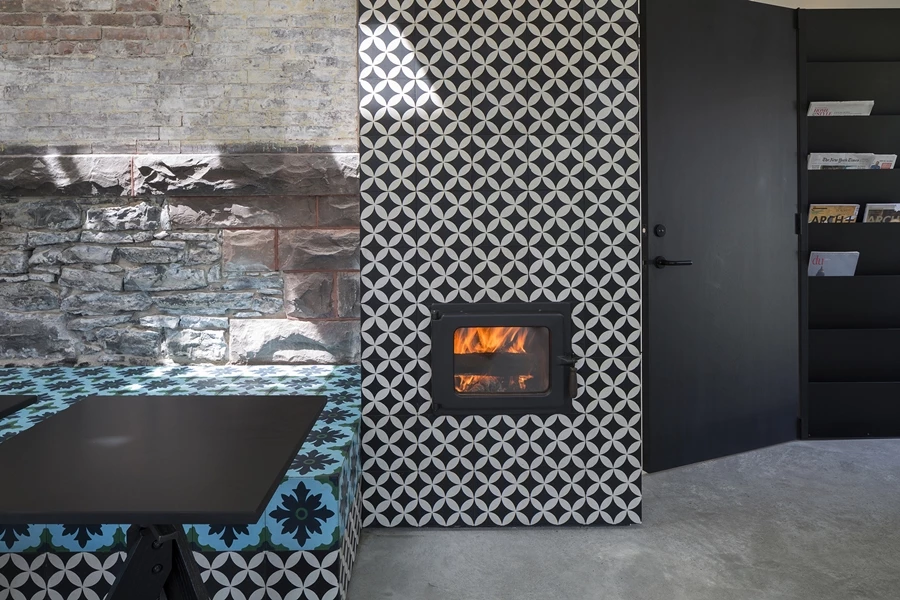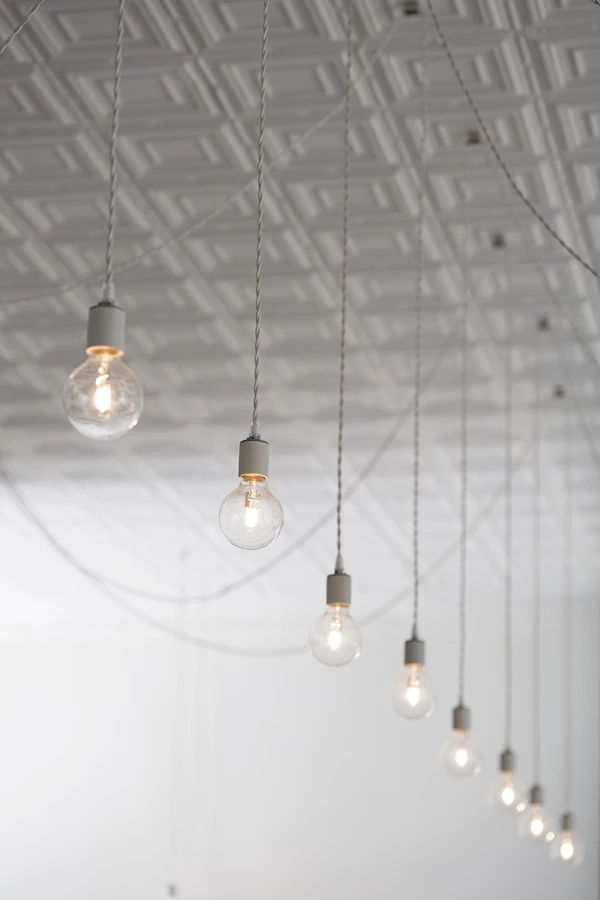A café in upstate New York has an innovative means of keeping its customers cozy. It features a masonry heater with a flue that runs horizontally and doubles as a bench. The building can apparently be heated for 24 hours following a single, hour-long burn.
Masonry heaters are typically built out of brick or stone, which absorb the heat from whatever fuel is being burned – in this case, wood. The structure can then radiate warmth to heat a room for long periods. The flues for such heaters generally rise straight up and out of a building. However, the masonry heater at the Buffalo café, designed by Stephanie Davidson and Georg Rafailidis of Davidson Rafailidis Architecture and the University of Buffalo Department of Architecture, has a flue chamber that exits horizontally.
The chamber is 15 ft (4.6 m) long and split lengthwise. The hot smoke is drawn out of the heater and along one side of the chamber to its far end before being pulled back down to the stove-end along the opposite passageway and being expelled from the building vertically through an exhaust pipe.
"Very long horizontal flues are unusual because smoke wants to go up, so it’s very challenging to keep it from stagnating," says Davidson. "Many of the masons we talked to said they couldn't do a horizontal flue longer than eight feet (2.4 m)."

The flue chamber is built from refractory cement and decorated with intricately patterned cement tiles. No other heating or cooling systems are installed in the café. For ventilation in the summer, there are large folding windows that allow fresh air into the building, with skylights to allow warm air out.
According to the University of Buffalo, the heating system took two years of research, development and testing, and can keep the café warm all day during the winter using just six logs. The café is due to open soon once a suitable tenant has been found.
Source: University of Buffalo










